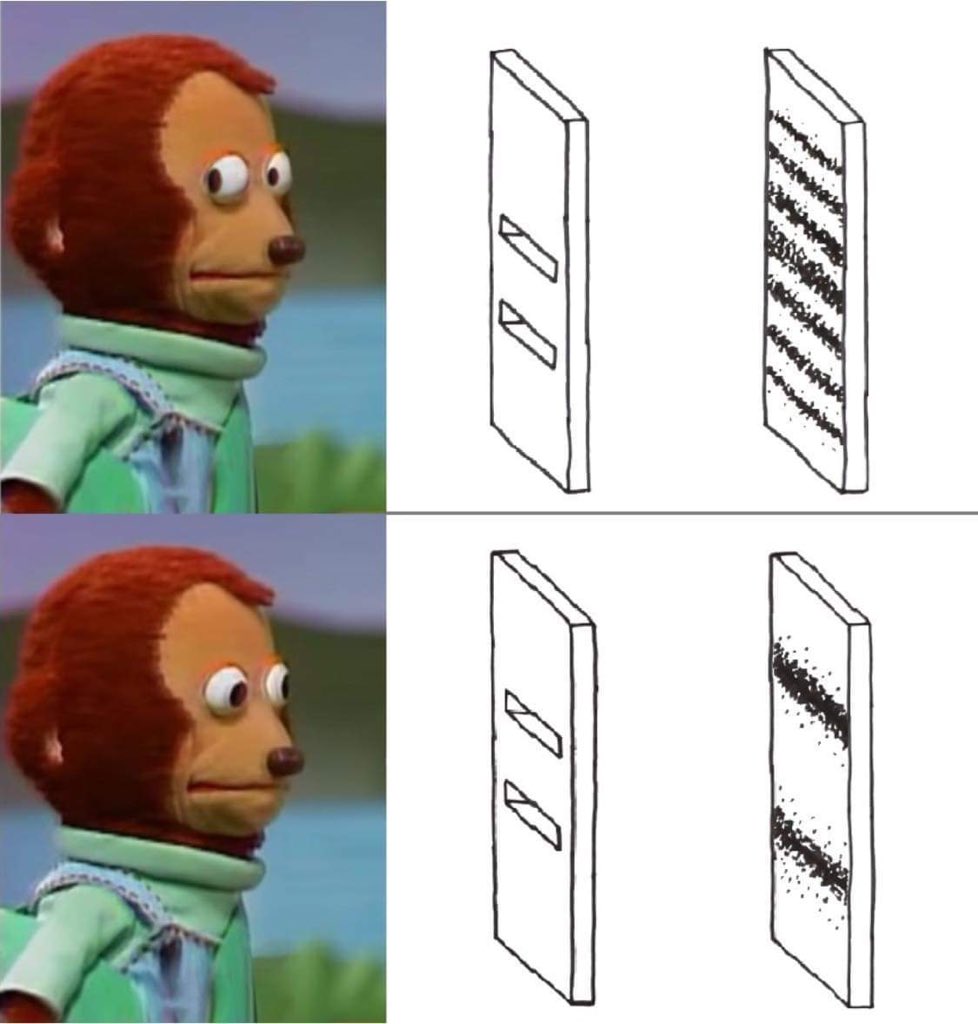this post was submitted on 18 Oct 2023
1507 points (97.5% liked)
Science Memes
16069 readers
1664 users here now
Welcome to c/science_memes @ Mander.xyz!
A place for majestic STEMLORD peacocking, as well as memes about the realities of working in a lab.

Rules
- Don't throw mud. Behave like an intellectual and remember the human.
- Keep it rooted (on topic).
- No spam.
- Infographics welcome, get schooled.
This is a science community. We use the Dawkins definition of meme.
Research Committee
Other Mander Communities
Science and Research
Biology and Life Sciences
- !abiogenesis@mander.xyz
- !animal-behavior@mander.xyz
- !anthropology@mander.xyz
- !arachnology@mander.xyz
- !balconygardening@slrpnk.net
- !biodiversity@mander.xyz
- !biology@mander.xyz
- !biophysics@mander.xyz
- !botany@mander.xyz
- !ecology@mander.xyz
- !entomology@mander.xyz
- !fermentation@mander.xyz
- !herpetology@mander.xyz
- !houseplants@mander.xyz
- !medicine@mander.xyz
- !microscopy@mander.xyz
- !mycology@mander.xyz
- !nudibranchs@mander.xyz
- !nutrition@mander.xyz
- !palaeoecology@mander.xyz
- !palaeontology@mander.xyz
- !photosynthesis@mander.xyz
- !plantid@mander.xyz
- !plants@mander.xyz
- !reptiles and amphibians@mander.xyz
Physical Sciences
- !astronomy@mander.xyz
- !chemistry@mander.xyz
- !earthscience@mander.xyz
- !geography@mander.xyz
- !geospatial@mander.xyz
- !nuclear@mander.xyz
- !physics@mander.xyz
- !quantum-computing@mander.xyz
- !spectroscopy@mander.xyz
Humanities and Social Sciences
Practical and Applied Sciences
- !exercise-and sports-science@mander.xyz
- !gardening@mander.xyz
- !self sufficiency@mander.xyz
- !soilscience@slrpnk.net
- !terrariums@mander.xyz
- !timelapse@mander.xyz
Memes
Miscellaneous
founded 2 years ago
MODERATORS
you are viewing a single comment's thread
view the rest of the comments
view the rest of the comments

You can only see photons when they bounce off something and into your eye. So you have no way to see the photons as they travel towards and through the slit, only after they hit a wall on the other side and reflect back to you.
So there's no way for you to observe the photons with your eyes before they've gone through the slit. In order to observe them as they head to the slit you need to hit the photons with something to measure where they are, and it's this interaction that collapses the waveform and makes the light travel though a single slit of the two.
Maybe as of I was a very young adult, or a large child.
I had a physics teacher in college who explained it like this.
Imagine we see by throwing tennis balls. You know the shape of something (and he gestured at a giant whale skeleton in the lecture hall) by Knowing where the tennis ball bounces off of the shape. If we throw a lot of them, we can "observe" the shape of an object.
Now imagine the object we want to observe is another tennis ball. With the skeleton, the tennis ball, even meant of them, hitting it and bouncing off won't effect it. But if we want to use our tennis ball sight to observe a tennis ball, it's going to knock the tennis ball away, thus we've significantly effected it.
The only way to "observe" a photon is to use something that will have a significant effect on it.
This was some 15+ years ago, so I might be misremembering the details slightly, but that was more or less the gist of it.
Ohh, that makes sense.
The double slit experiment itself, or why simply looking at the double slit experiment doesn't change the outcome?